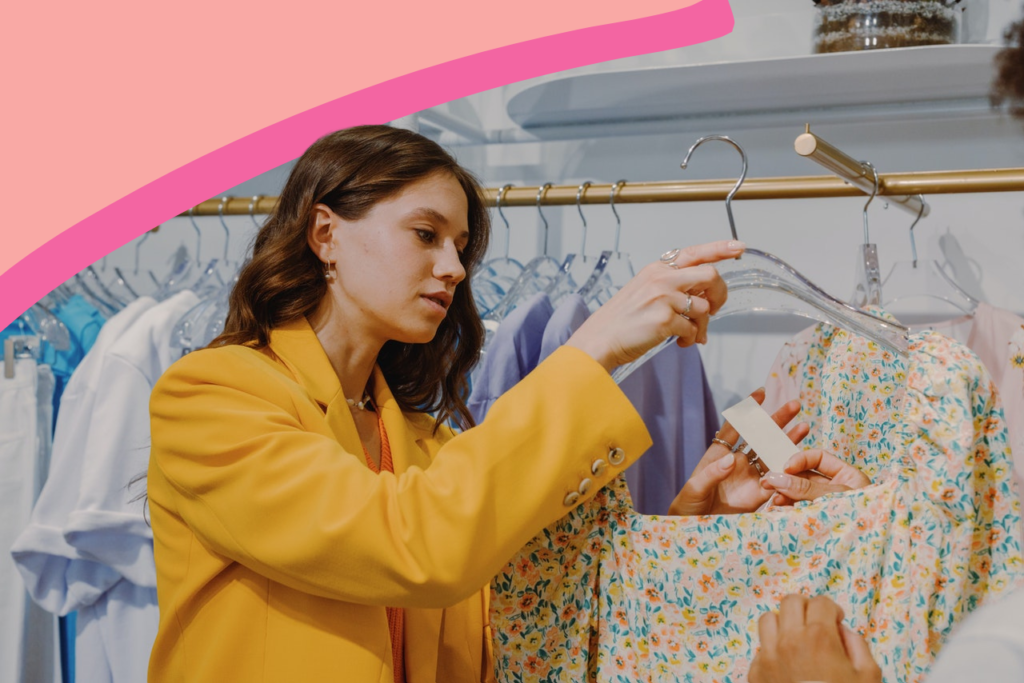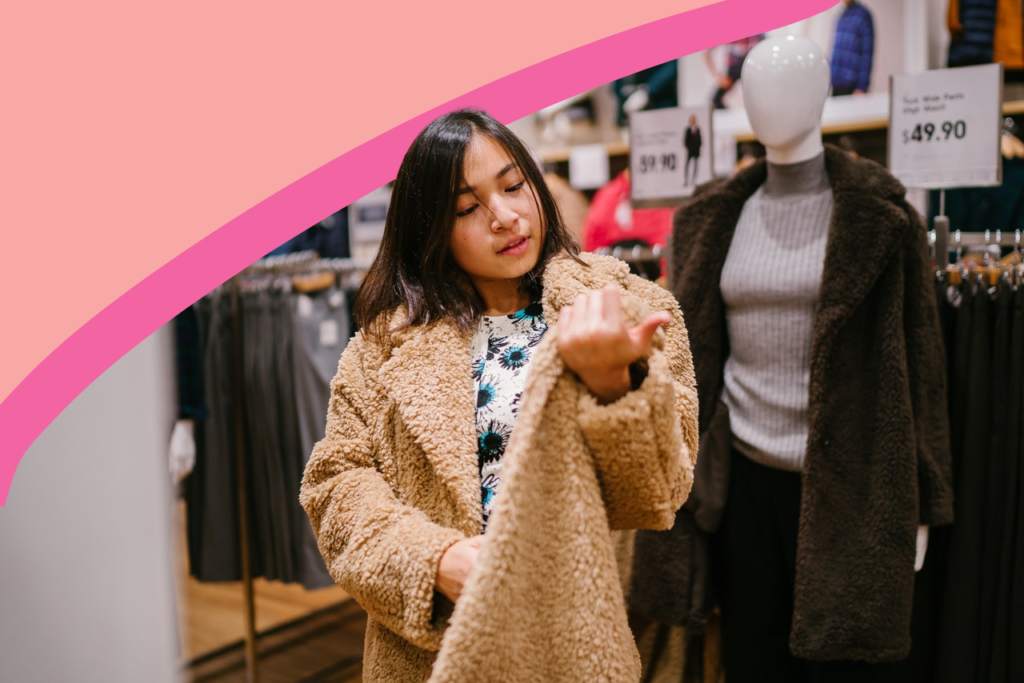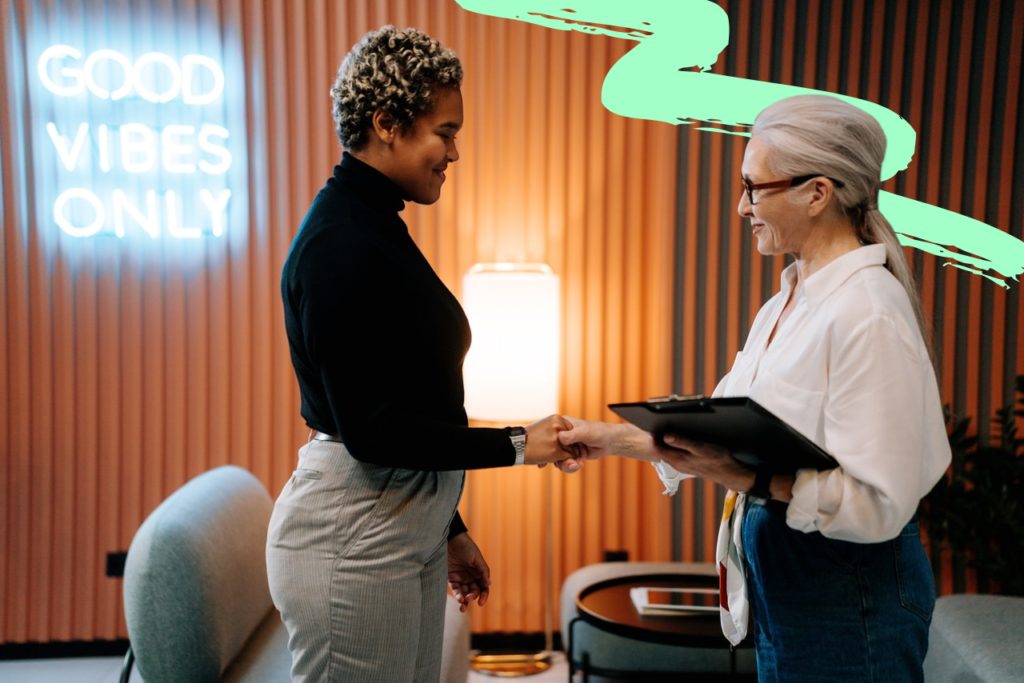The colours we choose to wear can speak volumes about our personality, mood, and even how we want others to perceive us. Colour psychology is a fascinating field that explores the emotional and psychological effects that colours have on human behaviour. Today, we’re exploring how colour affects our wardrobe choices. Let’s dive in…
The Impact of Colour on Wardrobe Choices
Colour psychology considers how colours affect our emotions, perceptions, and actions. Researchers have found that certain colours can evoke specific emotions and reactions in people. For instance, red may elicit feelings of passion and excitement (largely because it attracts attention), while blue might foster a sense of calm and tranquillity.
These associations are not just cultural, but also have roots in our biology and evolution, and it’s because of these instinctive connections that some believe there’s significance in the colours we choose to wear.
Mood Enhancement
One of the most significant ways that colour affects our wardrobe choices is through its apparent ability to enhance or alter our mood. Wearing bright, vibrant colours like yellow or orange can boost our energy levels and make us feel more optimistic. On the other hand, wearing darker colours like black or navy can create a sense of sophistication and elegance.
By understanding the supposed emotional impact of different colours, we can make informed decisions about which hues to incorporate into our outfits to achieve the desired effect.
Read: IDEAL colours to paint your home to inspire creativity and wellness

Personal Expression
Our choice of clothing colours can be a form of self-expression, reflecting our personality traits and preferences. Someone who prefers bold, daring colours like red and purple, for instance, might be seen as confident and outgoing.
In contrast, someone who opts for more muted, earthy tones like brown and green may be perceived as grounded and introspective. Understanding the psychological associations of various colours can help us select clothing that aligns with our authentic selves, if you believe in that sort of thing, of course.
Cultural & Social Influences
Cultural and social factors also play a significant role in shaping our colour preferences and wardrobe choices. For instance, in many ‘Western’ cultures, black is associated with mourning and is often worn at funerals, while white symbolises purity and is commonly worn by brides. That said, in Buddhist cultures it’s white that represents mourning and death.
Similarly contrasting, red is associated with good luck, prosperity, and happiness in many East Asian cultures, especially in China, whilst in some Western cultures, the colour is associated with danger.
These cultural associations and contrasts can influence our choice of clothing colours for specific occasions or settings, and should inform us of the importance of cultural sensitivity and an openness to learning as much as we can about the diversity of culture and symbolism across the world.
Colour Combinations & Contrast
The way we combine colours in our outfits can also have a psychological impact. Complementary colours (those opposite each other on the colour wheel) create a striking contrast that can make an outfit stand out, which can be enhanced further by clashing patterns and materials on different ends of the tactile spectrum.
On the other hand, analogous colours (those adjacent to each other on the colour wheel) create a harmonious, cohesive look.

Understanding how different colours work together can help us create outfits that are visually appealing and evoke the desired emotional response. Here are a few interesting colour combinations that we’re particularly into this year:
- Deep purple and mustard yellow: This combo is perfect for fall, adding a rich, warm feel to any outfit.
- Burgundy and dusty pink: A sophisticated pairing that’s perfect for any occasion, from a day at the office to a night out.
- Mint green and coral: This fresh and playful combination is perfect for spring and summer, radiating positive vibes wherever you go.
- Lavender and sage green: A pastel dream come true, this duo is soft and dreamy, perfect for a romantic date night.
- Navy blue and burnt orange: A timeless pairing that screams elegance and sophistication, perfect for those who want to make a statement.
- Olive green and maroon: A rich, earthy combination that’s perfect for fall, bringing out the warm tones in your skin.
- Teal and brick red: This pairing is bold and beautiful, perfect for those who don’t shy away from making a statement.
- Fuchsia and charcoal grey: A playful yet refined combination that’s perfect for adding some colour to your work wardrobe.
- Turquoise and goldenrod yellow: This pairing is perfect for those who want to add some sunny optimism to their wardrobe, creating a cheerful, uplifting vibe.
- Cobalt blue and tangerine orange: A bright and bold combination that’s perfect for summer, adding some energetic, playful vibes to your outfit.
The Role Of Colour In Professional Settings
In professional settings, the colours we wear can impact how others perceive our competence and trustworthiness. Some even posit that wearing darker colours like black, navy, and charcoal grey can create an impression of authority and expertise. In contrast, lighter colours like pastels may convey approachability and friendliness. A combination, then,
By strategically choosing the colours we wear in professional contexts, we can subtly influence how others perceive us and, ultimately, our success in the workplace.

Embrace The Power Of Colour
We’ve teamed up with the guys at Temu for this next part. Temu’s range of fashion items feature a diverse palette of colours, and they tell us that by understanding the semantics and potential meaning behind each colour, you can make smarter wardrobe choices that not only boost your confidence but also help you express your personality.
Red: The Colour Of Passion, Energy & Power
Red is an attention-grabbing colour often associated with strong emotions like love, anger, and excitement. It’s thought that wearing red might make you feel more confident and assertive, making it an excellent choice for days when you need an extra boost of energy.
However, be cautious about overusing red, as it can also come across as aggressive or domineering. Try incorporating red accents or accessories into your outfit to strike a balance.
Blue: The Colour Of Trust, Stability & Calmness
Blue is a versatile colour that can evoke feelings of trustworthiness, stability, and calmness. It’s a popular choice for work environments because it conveys a sense of reliability and professionalism.
Lighter shades of blue can make you appear more approachable, while darker shades can create a more authoritative look. Mix and match different shades of blue to create a wardrobe that’s perfect for various occasions.
Green & Buff: The Colours Of Growth, Harmony & Renewal
Both green and buff are associated with nature, growth, and harmony, making it an ideal choice for those looking to create a sense of balance and renewal in their wardrobe. Wearing green can help you feel more relaxed and at ease, while also conveying a sense of freshness and vitality.
Opt for lighter shades like mint or sage for a more casual and approachable look, or go for darker shades like emerald or forest green to create a more sophisticated vibe. Because of that evocative sense of harmony, both green and buff are popular colours for work uniforms and semi-formal attire.

Yellow: The Colour Of Happiness, Optimism & Creativity
Yellow is a bright and uplifting colour that can instantly boost your mood and inspire feelings of optimism and creativity.
Wearing yellow can make you feel more energetic and cheerful, making it a great choice for days when you need a little pick-me-up. However, be mindful of the shade you choose, as too much bright yellow can be overwhelming. Incorporate softer shades like mustard or lemon into your wardrobe for a more subtle and wearable look.
Purple: The Colour Of Luxury, Mystery & Spirituality
Purple has long been associated with royalty, luxury, and spirituality, making it a popular choice for those looking to convey a sense of sophistication and depth. Wearing purple can help you feel more confident and self-assured while also stimulating your imagination and creativity.
Choose lighter shades like lavender or lilac for a more delicate and feminine look, or opt for deeper shades like plum or eggplant for a more dramatic and mysterious vibe.
Pink: The Colour Of Compassion, Love & Playfulness
Pink is often associated with compassion and love, making it an ideal choice for those looking to create a sense of warmth and playfulness in their wardrobe. Experiment with different shades of pink, from soft blush tones to more vibrant fuchsia hues, to find the perfect balance that suits your personal style.
Black: The Colour Of Elegance, Power & Sophistication
Black is a timeless and classic colour that can be suggestive of elegance, power, and sophistication.
Wearing black might help you feel more confident and in control, making it a popular choice for formal occasions and professional settings. However, don’t shy away from incorporating black into your everyday wardrobe, as it can also help create a sleek and polished look that’s perfect for any occasion.

White: The Colour Of Simplicity & Freshness
White is a versatile colour that can symbolise simplicity and freshness. Wearing white may imply a sense of renewal or optimism, making it an ideal choice for those looking to create an airy and minimalist wardrobe.
Be mindful of the fabrics and textures you choose when wearing white, as it can easily show stains or wrinkles. Opt for high-quality materials and well-tailored pieces to maintain a polished and sophisticated look.
The Bottom Line
The psychology of colour is a fascinating and complex subject that influences our wardrobe choices in numerous ways. By understanding the emotional, cultural, and social implications of various colours, we can make more informed decisions about the clothing we wear and the image we project to the world.
So, the next time you’re shopping for new clothes or getting dressed in the morning, consider the psychological impact of your colour choices and use this knowledge to create outfits that truly reflect who you are and how you want to be perceived.





